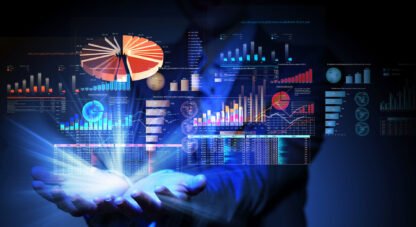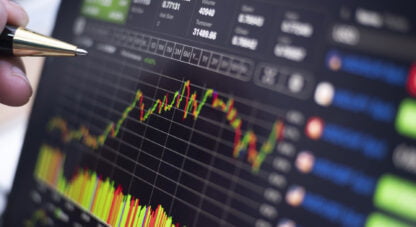About this week’s show:
- Bank reserve assets up over a thousand fold
- Can the FED prevent hyper-inflation?
- Where did the Chinese “find” 700 Billion?
The McAlvany Weekly Commentary
with David McAlvany and Kevin Orrick
Kevin: Over the last six weeks or so, Dave, I think it’s a good rear-view look at what the syllabus, or the style, of the Commentary really is meant to be. We had William White, and we had Goodhart, two central bankers, and obviously, central banking has a huge role in the economy right now. And then, we had David Gurwitz, who looks at cycles, because cycles obviously play into the rise and fall of markets and politics. And then of course, Dr. Friedman, talking about, not only the Ukrainian situation, but what is the geostrategic. So we’ve gone from the financial to the economic, to the political, to the geostrategic. David, doesn’t this actually play right into what you were saying, as far as giving our listeners an ear to your learning style, basically.
David: The world is interconnected. There is just no question that the world is interconnected, and we’ve lost something in our modern educational system where we have sort of created each field of endeavor, field of study.
Kevin: Specialties.
David: As a specialty, disconnected from any other, and I think we do lose something there. There are very few schools today that would approach a general education as being necessary to a specific skill set and application in the professional world.
Kevin: I think of the old country doctor versus the specialist today. You have doctors right now, that if they were reading 28-29 hours a day, which there isn’t, they still couldn’t keep up with their one level of specialty. They’re not generalists anymore. David, it reminds me of something that you said before we ever started doing this program, when you were at Oxford. You talked about a program that was really trying to train much more of general look at the world using politics and economics. What was that called?
David: It was called the PPE Degree, the Politics, Philosophy, and Economics Degree, and it was designed, really, to create the statesman, or the folks who would rule the world at a distance, as they were posted by the British all over the world. And it is interesting to me, there are three schools here in the U.S. that do focus on a great interdisciplinary blend before you dive into your specific major: Dartmouth, Columbia, Boston College. They all look at the reading of literature and history and philosophy as being just as important for the doctor and the scientist as it is for someone who is going to actually have a practice in the soft sciences.
So when we do look at a Friedman, a Goodhart, a William White, a David Gurwitz, we see cohesion, where a lot of people might say, “How does this all fit together?” When you look at the comments from Charles Goodhart and Willam White, what you have is central bankers looking and reflecting on policies that impact the financial markets, first and foremost, but with the long-term impact being directly into the economy. And the economy definitely has an impact on politics. So you see that there is sort of a trickle, if you will, downstream. There is a central bank policy which has a financial market impact, which ultimately creates an economic reality, which then, in turn, creates your political context. How are people voting? Well, we know that people vote their pocketbook. So things are either improving, or not improving, and you can trace that back to, again, sort of gerrymandering that is done by central bankers to sort of create certain outcomes. Now clearly, they’re not trying to create the winners and losers in the political race, but unintended, they can certainly have that consequence, in terms of the policies that they put in place, and the implied reality.
Kevin: And wouldn’t you say public perception is really what they are managing? More than money, more than politics, they’re really trying to manage perception. It reminds me of the old con games. Remember, The Sting? We had Robert Redford and Paul Newman in there. They were able to manufacture a perception that lasted quite a while. But Dave, these numbers that are coming in on the economy right now, not just from China, but all around the world, it looks like all they really did, the managers of the world, was to delay the inevitable, because we’re not getting the recovery that they spent a whole lot of money trying to manufacture.
David: In the U.S. we had the banking system which was basically recapitalized with over 800 billion dollars in capital created and injected into the financial system in the context of the crisis. That kind of recapitalization did not take place with the European banks. There is still tremendous frailty in the European financial system as a result. Essentially, whether you are looking at the financial institutions, or hard economic statistics, it is a mixed bag, at best. If you look at last week’s unemployment numbers, and they remain an abject joke. What defines the context for the average investor is the “fact” that the unemployment number, U3, dropped from 6.7 to 6.3, and that, we should all pat ourselves on the back, we’re making progress, etc., etc.
Kevin: But Dave, the reality was, the work force shrank by 806,000 people. So of course, you are dealing with a smaller number that you are dividing by when you are looking at the unemployment number.
David: And I think there are a number of market practitioners that are beginning to wise up to the importance of labor participation. The fact that that number is now at 1978 levels is disturbing, and people are beginning to pay attention and say, “Wait a minute. We could actually have a healthier economy and a higher unemployment rate, because frankly, the unemployment rate isn’t telling us what we need it to tell us. It’s a fabricated number. What do I mean by fabricated? What do I mean by a false reality? It is simply this. Out of the 288,000 jobs that were created, guess how many came from the death/birth modeling?
Kevin: Which is the model that they just come up with a number, right?
David: Precisely. You know, demographically, there are a certain number of people dying, and a certain number of people being born, in a given year, and so you can guestimate the number of people that should be coming into the work force, 16, 17, 18, 19 years old, graduating from high school, graduating from college. These are people who will be coming into the work force. It is a guess. It is a wild 8 guess: 234,000 jobs were attributed to the birth/death model.
Kevin: Out of how many?
David: 288,000 jobs created.
Kevin: 234,000 were a made up number, basically.
David: This is where, again, when you look at the number, the number is not the number. The number is not the number. And if you think that 6.3 is impressive, do recall, as you mentioned, 806,000 people left the work force. That’s a problem.
Kevin: Then that helps explain something that I just read yesterday, that 62.8% of the population right now here in America is actually working. So we’re nearing the level where just a little over half of the people in America are actually holding a job.
David: It’s that issue of, things look okay, and they’re really not. Let me give you an example. We have, in the treasury market, the long-term treasury market, 30-year bonds, there is huge demand for those. Pension funds are looking and saying, “We’ve had gains in the stock market last year, let’s go ahead and roll those assets into something that creates an income.” Well, your 30-year treasury paper is remarkably low, about 3.37%, the 10-year is closer to 2.6%. This is according to Bloomberg. Bloomberg reported this week that treasuries which are due, that is, their maturity is 10 years or more, they account for just 5% of the 12 trillion dollar market in U.S. debt.
Here’s the real important thing. You look at low rates, and you assume, well gosh, this is an indication of health in the economy. Low rates, there is no credit risk that anyone is concerned about, you know what happened a few years ago in Europe. As the European countries on the periphery were facing major bank and fiscal strain, what happened to interest rates? Interest rates spiked. Now, things are healthy. Now rates are back down low. We have low rates here in the United States. Certainly, that implies a health and well-being, we should be moving forward, that these low rates are an indication of real strength in the financial system.
Kevin: What you are saying is, of the long bonds, over 10 years, we’re only talking about 5% of the market, which means you must have rollover coming up on an awful lot of debt.
David: This is the problem. When you look at anything on the surface, you can say, “Listen, 3.37%, that’s great. It’s a little more expensive than German bonds.” Here’s what I take away. You’ve got a maturity catastrophe immediately in front of you. Now, immediately, does that mean next year, does that mean the next two years? At some point, we have a huge amount of debt.
Kevin: That somebody’s going to have to re-loan us.
David: Right. And see, here’s the thing. We’ve talked about this before on the program. Corporations will say, rates are low. Let’s finance on the longest terms possible, 20 and 30 years.” What we’re saying is that less than 5%, according to Bloomberg, of that 12 trillion dollars in U.S. debt, goes beyond the 10-year maturity. It means that the majority of that 12 trillion dollars is short-term debt, and has to be refinanced, very soon. Again, is that 3 years, is that 5 years? All that is to say, we have rollover risk in the treasury market, major, major rollover risk, and people do not appreciate it. They aren’t looking at it.
Kevin: So, then, you are Janet Yellen, just for a moment Dave. How do you continue the exit strategy that they are talking about, as far as the quantitative easing? Part of what has been financing these debt rollovers is the quantitative easing.
David: A lot rides on a very uncertain exit strategy by the Fed, and there are a few new programs that you should be aware of. If you look at the excess reserves of depository institutions, these are banks, your local banks, your big banks, who have cash, and either because of regulations and hesitancy to lend to someone who doesn’t have a very good credit rating, or because they don’t like what they see. So, again, you have regulatory issues. You also have just concerns about lending at this stage in the game.
Kevin: Well, historically, haven’t those reserves been relatively low, because banks don’t make money unless they are loaning money out.
David: Well, let’s say this. Banks would rather make 3, 4, 5, 6% on a loan, than take that same cash, redeposit it with the Fed and earn a quarter of 1%. So they’re not earning much on the money that is there, and you are right, a 10-year average leading up to 2008 was about 2 billion dollars that was excess reserves of those depository institutions. Now those reserves stand at 2.6 trillion, not billion, trillion dollars.
Kevin: That’s a thousand times more … that’s amazing.
David: There are several observations that warrant discussion here, because this has been regarded as a likely source of future inflation, and so it is particularly critical to watch. Number one, with a healthy money multiplier, these reserves are like fuel to an inflationary fire.
Kevin: When you put a dollar into the system and it turns into 2, 3, 4 times over, as you are changing hands, that’s the multiplier.
David: Let’s say that the normal money multiplier is 10. Two point six trillion is a large number, but go ahead and add another digit to it. Make it 26 trillion floating around the system. Now, not only do you have asset price inflation, you have consumer price inflation, at a scale that basically eviscerates the middle class. So, number one, with a healthy money multiplier, these reserves have major inflationary impact. Number two, the Fed will do anything in its power to prevent those reserves from being deployed. And this is the issue, when they started implementing this policy they did not anticipate the buildup, and so they have not crafted an exit strategy. But now they’re in the process of doing that. And this is what the strategy is called. It’s called “the fixed rate, full allotment, overnight repurchase facility.”
Kevin: It sounds complicated.
David: Again, a fixed rate, full allotment, overnight repurchase facility, which, in essence, takes the treasuries and mortgage-backed securities which have been accumulated by the Fed – keep in mind those are the assets which they have monetized through the quantitative easing programs, 1, 2 and 3. It takes those assets and it loans or swaps them for the cash that banks are now so flush with, and have re-deposited with the Fed. That’s what they call the excess deposits of reserve institutions.
Kevin: They’ve almost created a circle. They create the debt, they create the money, and then the money that they created buys the debt. It keeps it from the system, basically.
David: It accomplishes two things, the new policy, the fixed rate, full allotment, overnight repurchase facility (laughter), a mouthful. What it accomplishes is that it provides collateral for the banks, and it provides collateral for the banks with a guarantee to repurchase those assets in the future. What you have with a repurchase agreement, a repo agreement, is that you are loaning the asset, but you are guaranteeing to buy it back, which, if you think about it, the banks aren’t going to have to take a risk on the value of the assets. Let’s say interest rates go up considerably, and you are looking at a loss of principle with those fixed income securities. According to the repurchase agreement, it should be, “We buy here, we sell here, and this is your captured interest rate in between.”
Kevin: So, they completely control the interest rates at that point, but who are they actually extracting the value from?
David: Well, let me finish this one other point, because at the same time you are soaking up the cash. This is the other thing that is accomplished. So, number one, you’re placing the assets, there is a guarantee to repurchase those assets in the future, and number two, you’re soaking up the cash.
Kevin: So it keeps it from turning into inflation.
David: Exactly. What would otherwise drive consumer prices bonkers, you are utilizing all the liquidity to basically neutralize itself. And it’s a bizarre, twisted world in which this can occur. Again, there is over 4 trillion dollars on the Fed balance sheet, and all this is, is a bookkeeping entry. Think about incestuous and sick this is. The Treasury says, “We need to raise money to fund government operations.” So the Treasury prints IOUs. That’s a treasury bill, bond, or note. Those bills, bonds, and notes are then bought by, not the marketplace with real, hard-earned money, but you’re talking about a bookkeeping entry where the Fed says, “Oh, we’ll take it.” And they’ve been buying 80-100% of all mortgage-backed securities last year and in terms of new issuance, as much as 80% of the treasury market.
The Fed has basically said, “No, we don’t have a bank account that we spend, it’s not real money. These are fictitious digital debits and credits. And we’re going to go ahead and buy those IOUs, generate this money for the treasury so that the government can go ahead and operate, but now has a debt to pay, and we’re going to collect interest from the government.” The Fed’s going to collect interest from the government, as the Treasury continues to pay interest on those loans. This is just twisted, it’s absolutely twisted.
Kevin: And what it does is, it robs Aunt Margaret, who is retired, who is trying to earn a little bit of interest on her CD. If the market actually had to pay competitive rates on interest, she would be able to earn maybe 4, 5, 6% of the interest, but basically, this is a bank bailout, continually, Dave. It’s all about the banks.
David: It is, and that’s the nature of interest rate repression. This is a concept where you suppress interest rates down to the level where you are redistributing the income generated on all fixed income assets. What would have gone to the saver, what would have gone to the bank depositor, is now going to the banking system, itself, and helping sort of bring healing to the banking system. They are recapitalizing, on a continued basis, the banking system. So, what’s the additional benefit for the Fed? They’re pricing the assets in the repo facility. This is really critical. Because they are setting the interest rate. Let that sink in.
If they are pricing the assets, and keep in mind, you’ve got 4 trillion dollars in mortgage-backed securities and treasuries, and you’ve 2.6 trillion dollars in buying power from the banks. Now you’ve got the Fed basically saying, here’s what we’re going to, by contract, in the repo agreement, we’re going to give you, or loan these assets to you, and we’re going to buy them back at this price. They’re setting the interest rate. This is 4 trillion dollars’ worth of assets which say that interest rates will stay where the Fed wants them to. And it’s 2.6 trillion dollars’ worth of cash, which the Fed may well simply by decree, only allow to flow into one place in the market. You see? So the RRP, as it is referred to, or the reverse repurchase facility, is the new substitute for quantitative easing, which allows for an engineering of interest rates at a much lower level.
Kevin: And I think it is important to point out, most listeners are not going to hear this on virtually any other financial show. This is why you had Charles Goodhart on. These guys continue to pull rabbits out of the hat. You have to talk to a central banker to understand this.
David: And I’ll be surprised if there is anybody still listening after our last little dialogue. It may seem utterly boring, but the difference between hyperinflation or no hyperinflation, the difference between a deflationary collapse – we’re talking about high-stakes gambling, and you could call it the next rabbit which is being pulled out of the hat, but at this point, I think it is worth remembering, that our interview with Charles Goodhart revealed this as the most scintillating reality. This is what we talked about a few weeks.
Kevin: He called it sterilization of the cash.
David: Exactly. We weren’t giving it a technical name, fixed rate, full allotment, overnight repurchase facility, or RRP. He simply said that the Fed would not allow those reserves to leak or flow into the economy. Why would he say that? Why would he say that emphatically, from one central banker to another? And hopefully you were listening to Goodhart’s views. Does it make sense? Does it make sense why we choose to speak with certain people on the Commentary? It’s because, honestly, if you want to know what is happening next, that’s it.
Kevin: Well, Dave, historically, though, we know that in no case in world history has a country been able to print money, indefinitely, and it continue to have value. Is this little plan that they are doing right now, does that preclude an inflationary outcome?
David: Perhaps. But perhaps not. You recall that Anna Schwartz and Milton Friedman said that inflation is always and everywhere a monetary phenomenon. So you could say, okay, well if they are controlling the money, and they are controlling the flow of those excess reserves, they’re not going to get into the economy, then there is not going to be any inflation to be concerned about, which, unfortunately, implies, and this is where Friedman, I think, is wrong, that central banks are the sole creators of money, the governors of inflation, and I think this neglects the nuance that banks create money and multiply it via the normal lending of a bank, what some people call fountain pen money, where you are writing a loan with your old fountain pen, and issuing and creating that money. That fountain pen money is in addition to what central banks simply do by printing or adding zeros on a screen to create digital debits and credits.
And then there is one other element. You can add the nonmonetary, and this is, again, where Friedman and Schwartz missed it, the nonmonetary element that drives all of the worst inflations, and that is where people, and the confidence they place in a currency, this is that psychological or sociological element we have often discussed, becomes very important. People vote every day via the transactions that they make, with an implicit view being expressed by where they put their money. Are they putting their money in a bank? Are they putting their money in the stock market? Are they putting their money in gold and silver? Are they putting their money in consumer goods?
Kevin: Boy, Dave, with all the complexity of this, it really sounds … there is a bottom line to this and that is, it’s still the confidence of the people in what is going on in the system, and they are voting yes to the stock market, let’s say, or they are voting yes to whatever market, but actually, a no vote could come with a shock, some sort of surprise that maybe these guys who are experts at control don’t foresee.
Let me give you an example: I am interested in the Manhattan project, and I went down to Los Alamos a couple of weeks ago, as you know, and just spent a little bit of time going through the museum. Los Alamos, of course, is where the atom bomb was developed back in the 1940s, but actually, it is still cutting-edge technology. Most of the United States’ defense technology comes from Los Alamos. They have a computer. I didn’t get a chance to see it, they don’t let people in, but it is the size of a football field, and it calculates at over a trillion bytes per second. It’s unbelievable.
David: Is that a petabyte?
Kevin: That’s a petabyte. And what they thought originally when they were working on the original computers, the ENIAC computer, and some of the first computers that come out of Los Alamos and Princeton, they thought, well gosh, with the right amount of inputs, we are going to be able to not only foretell the weather, but actually probably even influence the weather, and here is what they found out. They have had to admit it at this point. They can forecast, with a petabyte type of computer, short-term weather. They can look at that.
David: As in, what’s going to happen tomorrow or the next day.
Kevin: Right, or is it raining outside?
David: Yeah.
Kevin: And they can look at the very, very long term, what they call the cyclical, but once you get out about 2-3 weeks, the complexity of the system makes it impossible to predict, and I’m looking at what these central bankers are doing, Dave, and you know that these guys are calculating more than weather on these computers, and they are sitting and saying, “Okay, psychologically, how do we keep the inputs under control. How do we forecast? How do we manage the weather? The problem is, they can’t control every element of the complexity of the system forever.
David: This is the weakness, I think, that most economists bring to the mix. They are assuming their models will show them everything that is relevant, and you can’t model crowd behavior, not really. It’s this latter element that we are talking about. Again, not the all-is-well confidence vote, but the no-confidence vote in the marketplace relating to the currency, a no-confidence vote that accelerates inflation rates, and it creates a cycle which most policies can’t begin to unwind and address.
Kevin: Yes, it’s too complex.
David: And this is why monetary policy makers, even though, as economists, they generally will say our models show this or that, they fixate, not on inflation, but on inflation expectations. There is a key difference there, because inflation expectations have everything to do with how people think and feel about the future of inflation. It brings in a very human element, which again, is very difficult to model. But ultimately, they do care about inflation expectations, knowing full well that when expectations shift, there is a self-fulfilling prophecy which enters the marketplace, and takes inflation rates to the level expected, via that radical shift in consumer and investor behavior. It is consistent with those shifting expectations.
Kevin: So they really have to manage people, is what you are saying.
David: It’s managing people. It’s managing choice. It’s playing a paternalistic role, and if required, playing the role of monetary dictator via price controls, and the elimination of free choice. That is a gray area, where, if it is exercised, again, free choice, the Fed becomes the cart following the horse. They’re sort of following along, not leading or directing. So what is the RRP? It’s just that. It’s the Fed superseding the free market, and directing capital to where they want it or need it to go. Have you ever watched someone lie? And then they create a series of new lies to cover up the old ones?
Kevin: It gets bigger and bigger and bigger.
David: More and more, that is what our monetary policy smacks of. We print, we use euphemisms to cover over the activity. We monetize. We neutralize the monetization using fabricated liquidity we placed in the banking system. It’s like asking where the pea is in a very complex shell game. The economic outcomes of deflation, of inflation, of growth, potential recovery, are anything but certain. The only real certainty is the Fed is already in deep kimchi. (laughter) And they must now create the illusion of control. PR, that is, public relations, has probably never been more important to the Fed in its hundred-year history.
Kevin: And if you had every government in the world just falling into lockstep with what the Fed was trying to do, I guess you probably could control that, to a degree, but there are some unknowns. We just talked to Dr. Friedman last week about the Crimea and the Ukraine. There are unknowns right now that are outside of the control of this people-management system. While we are discussing the crowd and psychology, I think it is worth mentioning other elements that do impact price, whether it is currency or market values. In the non-economic, or financial category, you have to include politics. Two countries come to mind. You have China and Russia. China’s currency reserves are now 4 trillion dollars, with maybe at least 2 of that being in U.S. dollar assets, and it has taken them about a decade to accumulate those reserves. You should note that the Fed’s phenomenal balance sheet growth, also, by coincidence, around 4 trillion dollars, no connection there, purely coincidence. We grew those assets on the Fed balance sheet without the same labor involved. (laughter)
David: Again, this is just digital debits and credits. They earned it and saved it, we printed it. The equivalent of printing. The modern-day day printing is just creating credit. They created a few gismos, gadgets, ran significant trade surpluses, for the last 12-15 years, in order to accumulate those foreign currency reserves. Martin Wolf, from the Financial Times, explains that China already exceeds U.S. exports, by about 14%. If you are looking at what they export, what we export, they already lead the pack by about 14%. They lag behind us in imports by about 31%, that’s less than the U.S., but they are poised to pass the U.S. as the world’s largest economy, this year.
Kevin: Oh my, you’re kidding. I remember when they passed Japan, that was just two years ago. It was an amazing thing, because they became the second largest economy in front of Japan. Who would have thought that we would be talking about it this quickly?
David: The World Bank, their ICP program – international comparison program, projects that they will hit that milestone this year, in 2014. The World Bank may have calculated it wrong, they may have it right, but anyway, they are patching up, in some regard. You mentioned they passed Japan just a few years ago. Maybe it is important to remember the law of large numbers. It may be impressive that, in aggregate, China is progressing in sort of a financial arms race, the financial arms race of our day. That quantitatively, in aggregate. Qualitatively, there are still massive, massive distinctions between East and West, or specifically, between the U.S. and China. 1.36 billion people, the population currently in China, that allows for pretty big aggregate results, but, on a per capita basis, if you look at income in China, it is still less than that of Peru.
Kevin: So the average Chinese citizen, if you just put a roomful of Chinese together, and just had the average, it’s still a relatively poor country, person by person.
David: By U.S. standards, they are incredibly poor. The reality is, their life is improving, leaps and bounds, but off a very low level. This is like a penny stock increasing 2 cents. It’s a very big deal, but it’s off of such a low level. So, yes, you can talk about the rates of growth, but again, it’s off of very, very low levels. So, on a per capita basis, earning less than those in Peru, everything in China is impressive, in aggregate, but the problems, I think, still lie in the particulars. China? No, you can’t ignore them. China has issues. Again, you can count those issues, or potential problems, instead of looking at it as sort of opportunity, you could say, “I’m counting 1.36 billion potential problems instead of opportunities. These are problems, providing clean water to 1.36 billion people, a clean environment. I can tell you, the time that I spent in Shanghai, I think it was as bad, or worse, than anything that people in Los Angeles experienced in the late 1960s or 1970s before there was any attempt to clean the air in Southern California. It was absolutely atrocious. If I was living there, I would guess that 10 years from now, you’re going to see people dropping like flies because of lung disease, because of asthmatic issues.
Kevin: I remember you saying, you could hardly see across the street.
David: No. I have pictures where I’m taking a picture of the sun, right in front of me, and growing up your parents tell you not to stare into the sun. In the land of the rising sun, you can stare into the sun, because there is so much pollution, you have a nice little shield. It’s an interesting phenomenon. What about social stability? What about food? You have to provide food for 1.36 billion people. You can look at it from the demand side and say, “Oh, this is great, if you can tap into the demand side.” If you’re selling into this, it’s an amazing thing. Turn it on its head and realize that the reason they have a million-man army is not because they have intentions of taking over the world, per se, but because they have such a glut of males between the age of 18 and 25, they can’t afford to have a million trouble-makers more in the country. Much better to put them to work, marching, digging ditches, saying yes sir and no sir….
Kevin: Rather than creating the next revolution, internally?
David: Exactly. The year before, that was the last time I looked at the statistic, 2012, 70,000 instances of civil unrest in China. That’s one year. So holding this together, advancing beyond a middle-income status, there are monumental challenges that the Chinese have to address. It is very interesting, one of the big economists over there, Mao Yushi, he said, China is big, but it’s not strong. I still don’t know if that is sort of false modesty, or really, he was just reflecting honestly on true reflections of the frailties of the Chinese officials who have to continually shore up.
Kevin: I think it might be a little bit of both, Dave, but I think the false modesty is also part of a strategy, because we’ve been watching China quietly accumulate gold reserves, huge, huge gold reserves. They’ve been the largest buyer the last few years. Yet, they still report a little over 1,000 tons of gold ownership, it’s probably 4,000-6,000 tons, we’ve talked about that before. But this week, 700 billion dollars just shows up on the their balance sheet that nobody knew about? How in the world does China, or actually, how does America not account for 700 billion, almost three-quarters of a trillion dollars in U.S. bonds that China just happened to find?
David: The U.S. has known, and the Chinese have acknowledged, 1.3 trillion dollars in U.S. treasury paper.
Kevin: Right. That was what was officially recorded, correct?
David: The speculation this week is that there is an extra 700 billion dollars in U.S. treasury paper which the Chinese own. Going back to Martin Wolf from Financial Times, he underscores the familiar observation that the Chinese, yes, they could dump U.S. assets. While that might hurt us, it would hurt them far more, because of the scale and scope of what they own. We’ll talk about that in a minute, perhaps, but I think this is a big deal. If, in fact, it is true, we will have to see if there is further evidence to corroborate a 2-trillion dollar U.S. treasury position as opposed to a 1.3 trillion. And maybe the big numbers quit mattering to you, but if Bernanke and the other economists are right, there is this idea of a global savings glut which could absorb any and all U.S. treasury paper. One, we don’t think there is a global savings glut because the savings glut is just a glut of liquidity created by at least three central banks: Bank of Japan, ECB, Fed, and maybe the People’s Bank of China, too.
And it’s the nature of fiat money to print when it’s needed, and the last five years have created, again, not a glut of savings which would go into treasuries, but a glut of fiat money to sort of grease the skids and ensure that we don’t head into a deflationary collapse. So the idea that there is this massive savings glut, I find to be something of a linguistic game. Savings, not as in bank savings by individuals, but as an accounting identity. There is something very important here, too. We have the Chinese, who can very well do the math, knowing that the best way to undermine U.S. hegemony is to do it silently.
Kevin: Which is what they’ve been doing.
David: And if possible, do it unobserved. You can do that via the currency markets, you can do that via the debt markets. Clearly, we have on record, you don’t try to outspend the U.S. in a military arms race. That was proven foolhardy by the Russians. But if we did underestimate the Chinese holdings of treasuries by 700 billion dollars, again we’ll have to see if that is confirmed, but if we did, then the Chinese may very well be able to conduct financial statecraft and warfare in such a way that we don’t know, or certainly won’t know, what hits us.
Kevin: And this is where that multi-disciplinary approach is so important: The financial, economic, political, and geopolitical. Because we think of war as boats and guns and planes. But war, James Rickards pointed out, warfare, actually, right now, is conducted more in the currency markets, more in the financial markets, more in the economic markets, than actually, in guns and tanks.
David: The writers in the Financial Times, or the Economist, or the Wall Street Journal, or the New York Times, would look and say, “It’s not in the Chinese interest to sell treasuries or dump treasuries, they’ll take a loss on their holdings. Selling treasuries at a loss is no more costly than having built battleships and carriers. So if a battleship or a carrier fleet costs something like 400-500 billion dollars, you sink the money into it, and then can have that asset sunk in two seconds. Why not take the equivalent of 400-500 billion dollars, and sink it yourself, and know that it has an implication far beyond loss of hardware. You can, in fact, debilitate the economy of your largest competitor.
Kevin: We have a gun to our head, actually, because the Chinese have enough dollars, and the whole idea, like you said, Bernanke is out there, and the people who are looking at this are saying, “Oh, they’ll never dump those dollars, they’ll always have to repurchase those bonds because they don’t want to hurt the dollar, they don’t want to lose.” But profit is not necessarily the goal. Okay, every once in a while you’ll have that pair of jeans that is just about to go to the cleaners and you reach into the pocket, and you say, “Wow, there’s a 20-dollar bill in there. That’s nice. Well, the Chinese reached into their pocket and pulled out 700 billion, possibly, here, and they’re saying, “Well, you know what, we really do have a lot of leverage on the United States at this point.” And unfortunately, we’re really seeing this now because China is aligning itself far more with North Korea, Iran, Russia. I watch NASA TV, I have it on in the background, I’m not a TV watching guy, but it is interesting. About every night, you’d have the Russians and the American astronauts all standing side by side doing interviews for grade schools in America. I haven’t seen the Russians.
David: Recently.
Kevin: Recently, yeah. They’re on their side of the station, the Americans are on their side of the station. But things are changing worldwide right now.
David: If we want to get home, by the way, we still have to hitch a ride.
Kevin: Yeah. With a Russian ship. Yeah, yeah.
David: (laughter) Well, so the Chinese can, and will, continue to grow their economy. I don’t know if I’m a bull or a bear. It kind of depends on the time frame. I think, short term, I’m probably very bearish on the Chinese economy. Long term, I’m very bullish. So I think you could have significant intermittent corrections, or even crashes. They are likely to use their financial wherewithal as they would any other arsenal asset, using it up to create a benefit should the opportunity present itself. But again, they know that we have the most powerful blue water fleet in the world, so why would they compete with the U.S. for who is in first position, militarily.
Kevin: Right.
David: And they know that they are not going to become number one in the world economy by racing ahead of us. You can just as easily become number one in the world economy by leveling the playing field, chopping someone off at the knees definitely gives you a height advantage, you see? And it’s not a question of your growth trajectory, as much as it is impairing the competition. And some combination of moving forward the way they want to, methodically, over the next 15-20, even 50-100 years, and at the same time leveling the field. It is interesting. Russia positioning in the Crimea, now Eastern Ukraine, suggests that we have forgotten Russia’s old identity, the Cold War identify, that they were the second great power for at least half of the 20th century.
And this kind of concern certainly would have seemed out of place 12 months ago, if we considered Russia an ally and a partner. We were waiting for their votes in the U.N. Security Council. Think about that. Russia and China, they’re both voting members of the U.N. Security Council, so they get to vote on issues relating to Syria, relating to Iran. Anywhere. Now we can see Russia’s bucking the West’s containment strategy. Now we can see that Russia is moving toward its own bank settlement system, and both the second largest economy, that is, China, soon to be the first, and the eighth largest economy in the world, that is, Russia, they’re setting a different tone at the U.N. They’re setting a policy agenda that is inconsistent with, or certainly is independent of, the post World War II trendsetters, that is, the IMF, the World Bank, NATO. So we really have sort of two worlds emerging. In so many ways, they are not allied. China is not going to displace the U.S., but there is this trend which is becoming obvious to all. The U.S. is going to have a harder time imposing its will on the rest of the world.
Kevin: With that in mind, we just talked about the men who control the universe, the central bankers, and this whole idea of financial repression, and maintaining the status quo, continuing to manage people and their thoughts. But you don’t have everybody necessarily playing the same game with the same rules. That’s what you are saying here. You could have some unknown come in here. Look at the GPS system that they’re working on. It’s not just a new banking system where you said there are two sides to the world. GPS, technology, internet. They’re looking at their own internet system that would be independent of the Western world.
David: You remember Mike Tyson’s quote? “Everybody has a plan going into a fight until you get punched in the face?” (laughter)
Kevin: Good analogy.
David: It’s almost like the Chinese and Russians, before they enter battle, they just say, “Okay, go ahead and hit me, because before I step into the ring, I want to be thinking like I should be thinking, not with a plan, but with, “I don’t know what’s going to happen next, but it could get interesting.” It’s just a different mindset altogether. We have the trend, again, of the U.S. not being able to impose its will on the world, being reinforced by a weaker currency, by a failing monetary monopoly, by emerging market economies feeling the full heat of imported inflation from the U.S. You remember Guido Montega saying, “ We’re in a currency war.” Why are we in a currency war? Because when we create liquidity, guess what happens in the emerging markets? We, in the U.S., create rampant inflation in the emerging markets. So, yes, do they want to reshuffle the deck? You’d better believe it. We have a foreign policy which is, at once, both haphazard and apologetic. We don’t know what the heck we’re doing, and we’re apologizing for the mistakes that we make, which in a world of strongmen only suggests weakness. And of course, you know that’s going to be exploited. Let me just say this. If you haven’t ordered a copy of Jim Rickard’s book, The Death of Money, you must do so.
Kevin: It’s probably one of the best explanations of the whole picture that I’ve ever read, Dave.
David: Well, you know, on a day-to-day basis we can fixate on things like the Chinese PMI, or the unemployment number, or these data points which either indicate an improvement, or a deterioration in the fundamentals. There are bigger picture issues in play, and I think that’s what he gets at, the coming collapse of the international monetary system. We’re talking about a currency reset. We’re talking about something that, basically, redefines the role of the dollar, and the role of the U.S. in the world. So anything that you have assumed to be true about the post World War II peace, it’s going to be different.
Kevin: There’s a reset coming, and Rickards points out that that doesn’t necessarily mean we’re all walking around with clubs and living in caves. What it means is just that it is a reset where the dollar is no longer the king.
David: Do you remember, as we talked to him a few weeks ago, the week that he issued his book – we talked to him in late March before the April 1st release of the book. He said, “This is not a big deal. There is a collapse of currency systems all the time. This would be the third in this century, just for the U.S. dollar. We had the system that we knew as the gold standard, we had the system that we knew as Bretton Woods. We’re talking about the post-Bretton Woods monetary collapse. This is not a big deal, no it’s not going back to the stone age, but in that reset, where values are subject to radical shifts, and ownership, also, is subject to radical shifts, you’d better be on your guard. You’d better play a defensive game, and be heightened in your awareness of risk, and potentially negative outcomes.
That, I think, is where the conversation must, as we have started today, it must be interdisciplinary. You must think in terms of geopolitics. You must think in terms of cycles and cycle studies. You must think in terms of central bank policies and the implications into, not only the financial markets, but the economy. The world is interconnected, so should your reading be. You should try to understand these things from an interdisciplinary standpoint. If you don’t, you are going to find yourself utterly lost and confused.

















